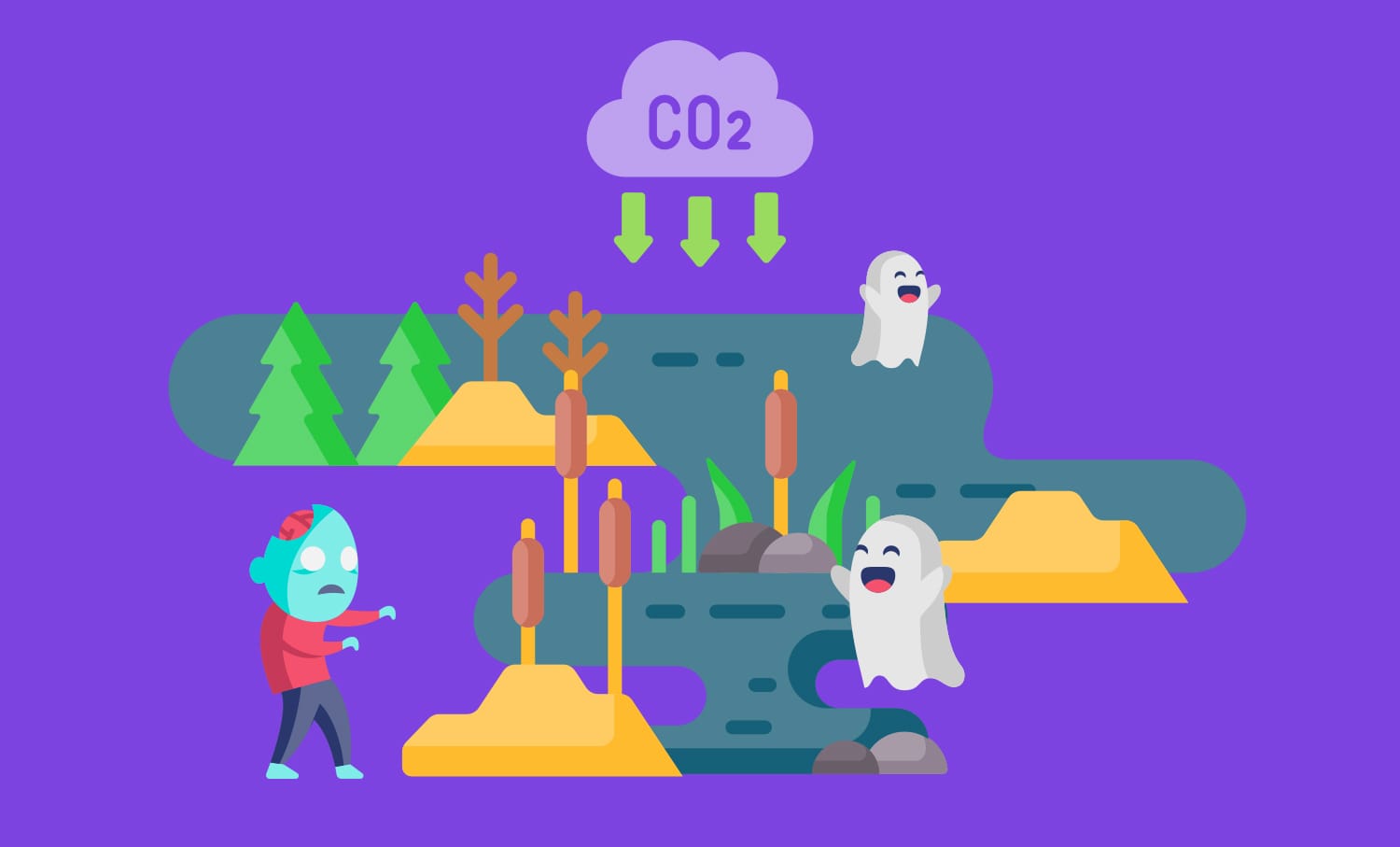The Intersection of Cultural Heritage & Climate Change
What can the echoes of a Celtic pagan festival teach us about the urgency of climate action today?

Samhain (pronounced ‘sow-inn’) was a major festival in the ancient Gaelic calendar. Widely observed across Ireland, Scotland, and the Isle of Man, it marked the end of the harvest season, and beginning of the ‘darker half’ of a New Year.
Being a juncture between the ‘darker half’ and ‘lighter half’ of the year, it was believed to be a liminal period when the veil between the world of the living and the world of the dead was at its thinnest.
Souls & supernatural beings
Souls of the deceased were thought to revisit their homes for the harvest feast, and a place was set at the table or beside the hearth to welcome them. Although the souls of thankful kin could return to bestow blessings, the soul of a wronged person could also return to seek revenge.
With doorways to the Otherworld opened, it was also believed that faeries – a supernatural race in Celtic mythology – could more easily cross the boundary into the physical world. Mystical beings associated with nature, magic, and the Otherworld, faeries are known for their enchanting beauty and mischievous behaviour, sometimes benevolent and other times tricksters.
In Irish folklore, encounters with faeries can range from blessings to warnings or even curses, depending on their mood. Offerings of food and drink would be left outside to appease the faeries, and ensure the people and their livestock survived the ‘darker half’ of the year ahead.
People wore masks to disguise themselves and confuse any faeries that might be out to cause mischief and harm. Children would go ‘souling’ with carved turnips as lanterns, requesting ‘soul cakes’ as an offering to the souls of the departed in exchange for a performance or a song.
Ireland is the birthplace of Halloween
Samhain is one of many pagan rites that has survived into the Christian epoch, with versions of its ancient rituals woven into the fabric of Halloween which is celebrated on October 31st in many countries around the world today.
The name Hallowe’en derives from it being the evening before the Catholic Feast of All Saints (the ‘Hallowed Ones’), aka Hallowmas or All Saints’ Day, on November 1st.
The impact of extreme weather events on food security & community structures
While we tend to take agricultural cycles and seasonal festivals for granted, the reality is that the acceleration of climate change in recent years brings erratic weather patterns. Increasingly unpredictable heatwaves, droughts, wildfires, and floods can devastate crops and disrupt growing seasons.
Compounding the threat to food security is the threat of cultural destruction, including displacement, forced migration, loss of community, and permanent damage to cultural heritage sites.
Incorporating cultural heritage considerations into all policy areas & funding for climate action
Experts have stressed the urgency of incorporating cultural heritage considerations into all policy areas and funding programmes for climate change research, monitoring, and data collection.
Achieving this would require an integrated approach, taking into consideration economic, environmental, and social costs, and utilising the wealth of traditional and local knowledge that cultural heritage itself provides.
While there are costs associated with this multitude of actions, the cost of inaction would be higher.
Our duty to future generations
If the natural world provides the setting in which many cultural practices and belief systems develop, then failure to protect the natural world goes hand in hand with failure to preserve the cultural traditions and celebrations that have shaped human civilisation for millennia.
Environmental stewardship and cultural stewardship are two sides of the same climate action coin.
We can, and must, do better.

